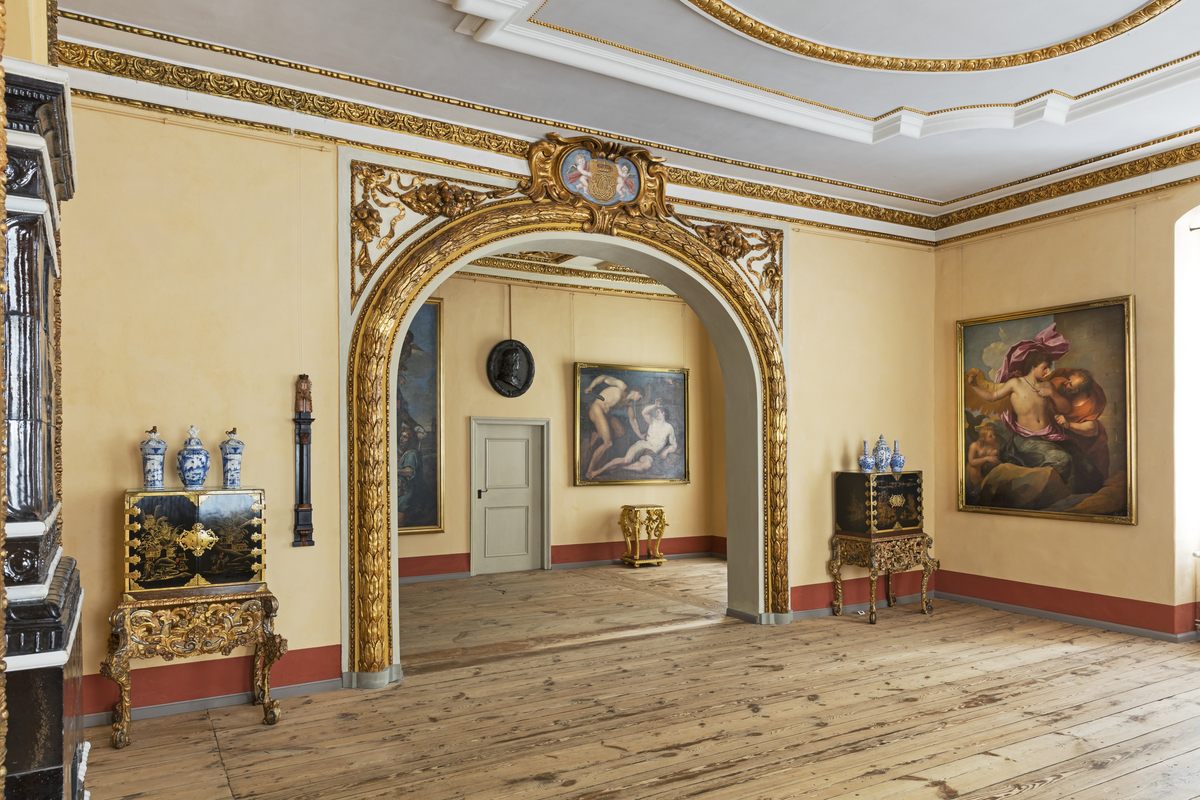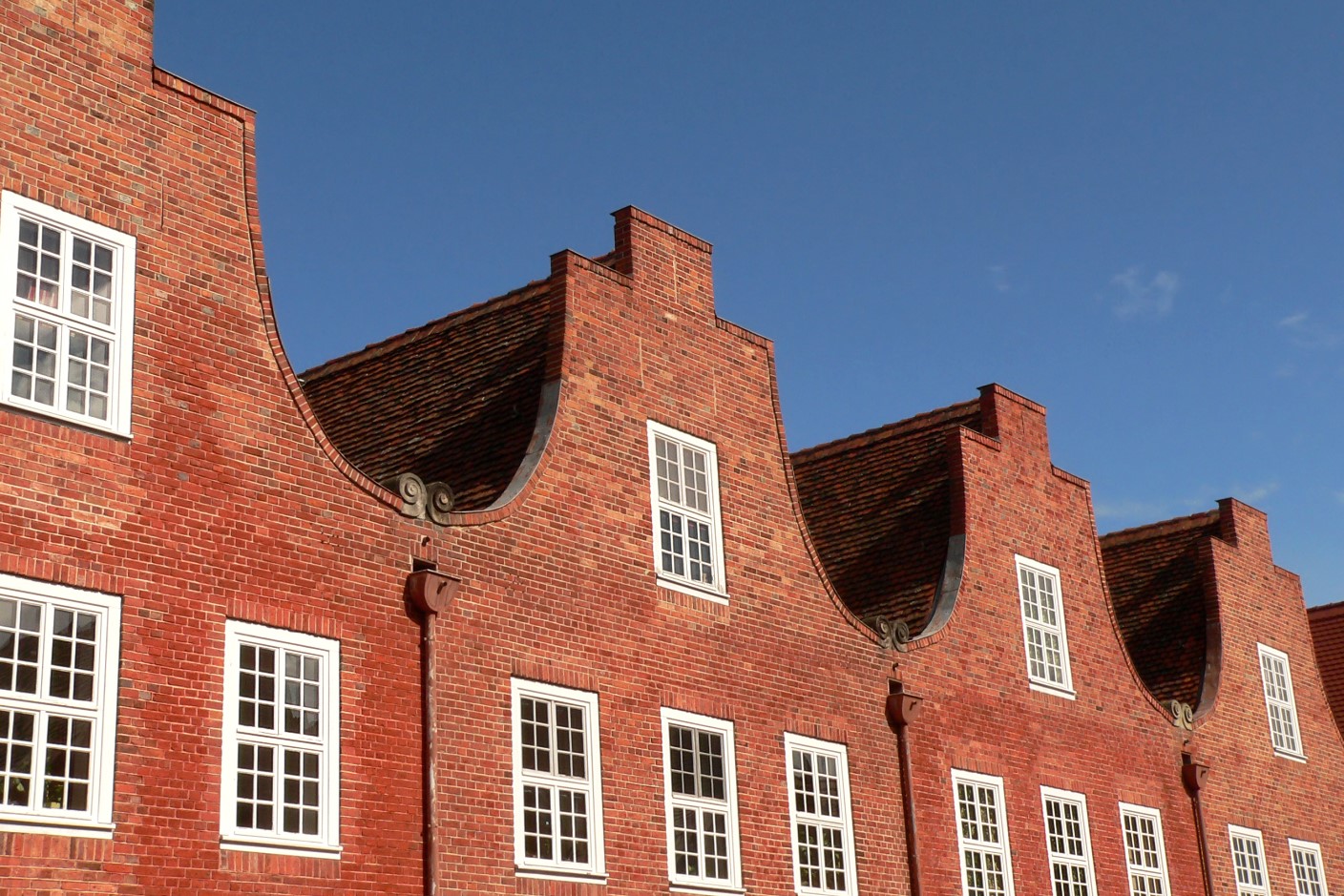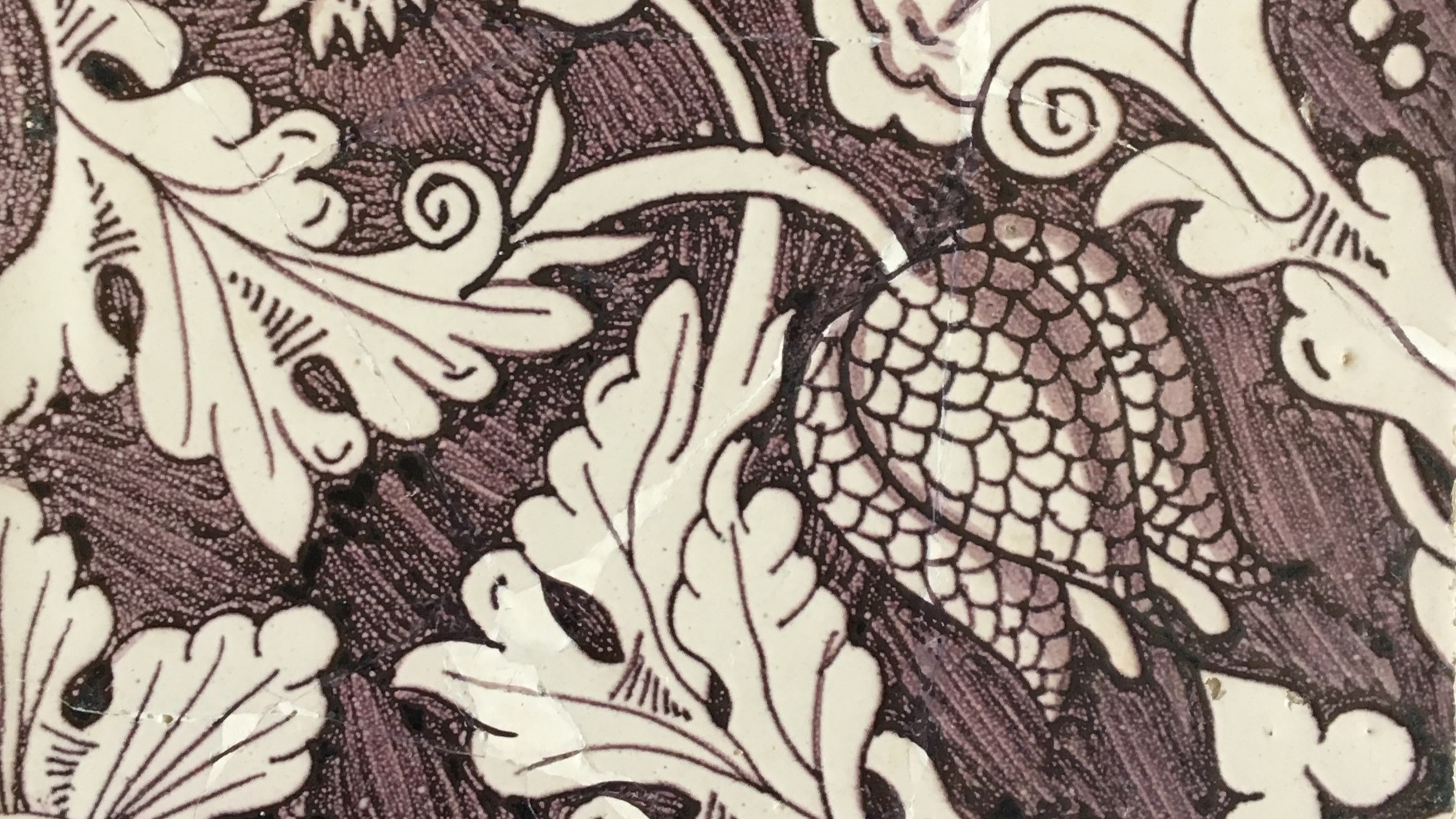
Dutch Tiles in the Stern Hunting Lodge
You have to look down to discover them. The manganese-coloured ornamental tiles in the anterooms to the kitchen and the king’s bedroom, which were intended to protect the whitewashed walls from soiling when cleaning the floors.
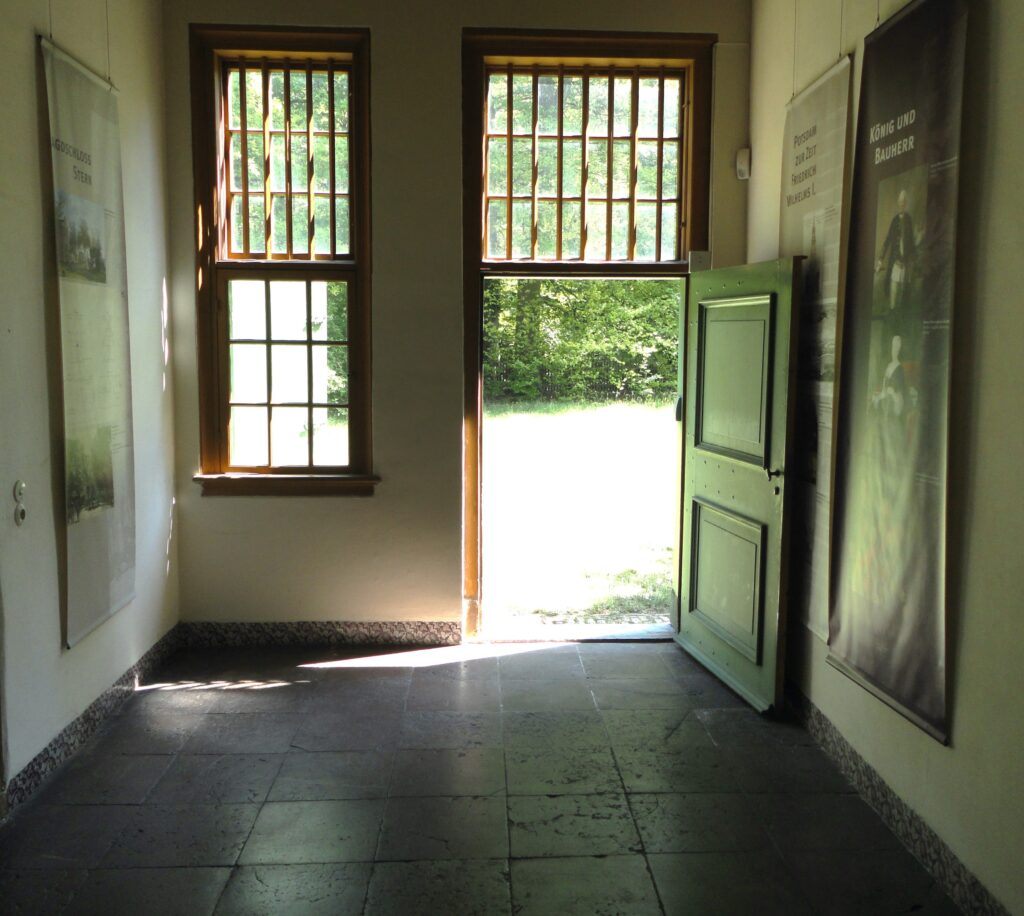
The tiles are an original relic of the time when the palace was built and further evidence that the owner, Frederick William I, obviously attached great importance to building the house in the Dutch style, even in such seemingly inconspicuous details. The tiles show a motif of stylised foliage, a carnation (lat. Dianthus, nl. Anjer) and a chequerboard flower (lat. Fritillaria meleagris, nl. Kievitsbloem), which is also suitable for tiling larger areas.
In the skirting boards in the Stern Hunting Lodge they are laid uniformly in a row. The motif and colour of these characteristic tiles are known from sample books of the Rotterdam “Tegelbakkersgilde” and are also documented in tile factories in Amsterdam, Bolsward, Harlingen, Makkum and Utrecht. Unfortunately, no evidence of the exact origin and delivery of these tiles has yet been found in the preserved files on the Stern hunting lodge. However, it can be assumed that the skirting boards in the hallway were installed at the same time as the floor-to-ceiling tiling in the kitchen.
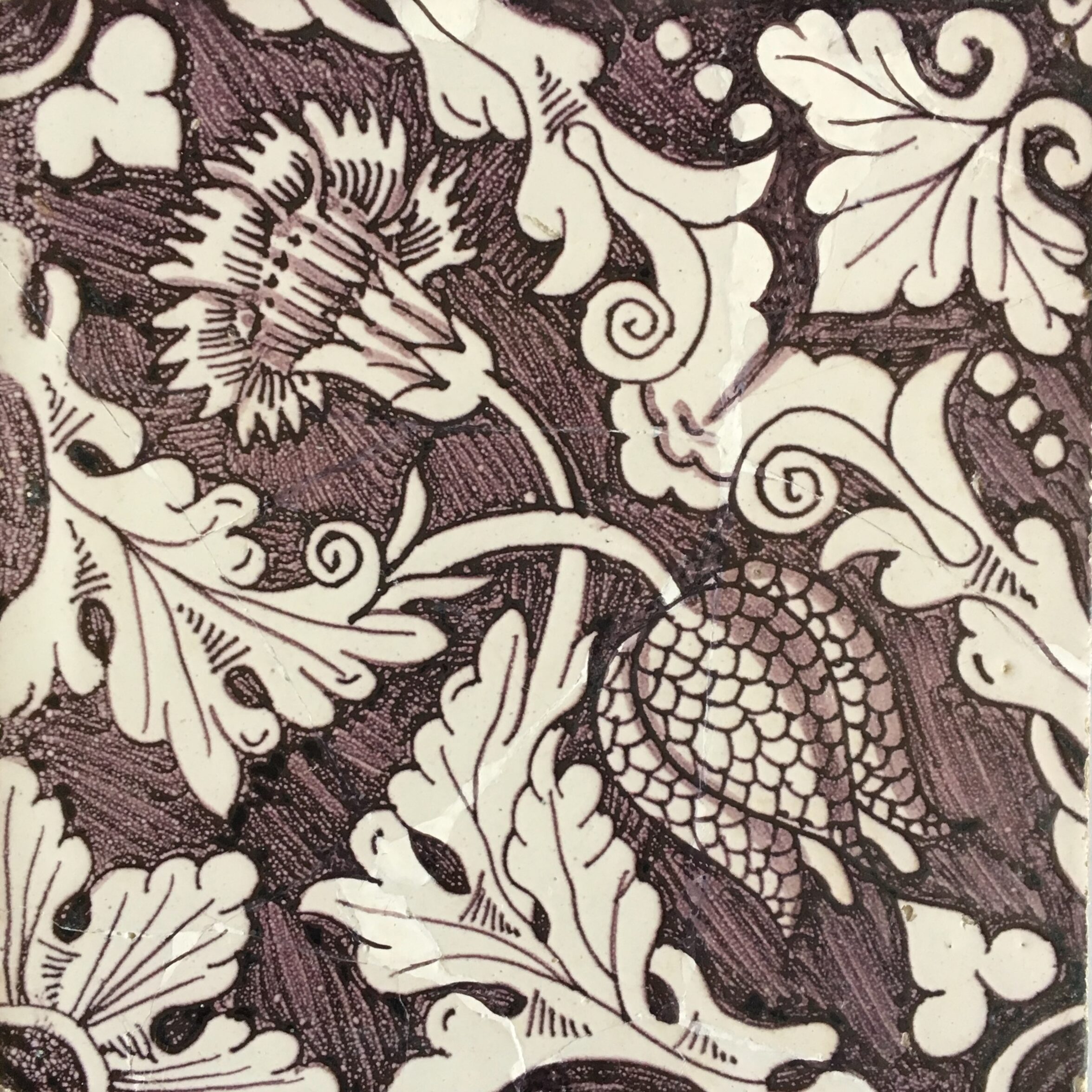
In Dutch town houses of the 17th and 18th centuries, kitchens, hallways, wall areas around fireplaces and cooking areas were often covered with faience tiles. In kitchens, expensive blue and white or manganese painted tiles were usually only used as a focal point for the back wall of the cooking area and the walls were otherwise tiled white. However, irregularities in the surface and colour due to the craftsmanship and the firing process gave even purely white tiled surfaces a lively spatial impression. The large-scale laying of painted tiles to decorate entire rooms first came into fashion with the design of summer dining rooms in castles. An example of this is the decoration of the Tile Hall in Caputh Palace, commissioned by Frederick William I around 1720.
From the original tile furnishings in the Stern hunting lodge, only the manganese-coloured ornamental tiles described here have survived. Although they were badly damaged, most of them were still in situ. A small exhibition in the Stern Hunting Lodge gives an impression of the extensive restoration of these ornamental tiles during the renovation in the 1980s.
The rescue and restoration of the Dutch tiles in the Stern Hunting Lodge is another exciting chapter in the eventful history of this special building and can be experienced on site during a special themed tour by the Förderverein on 27 August 2023.
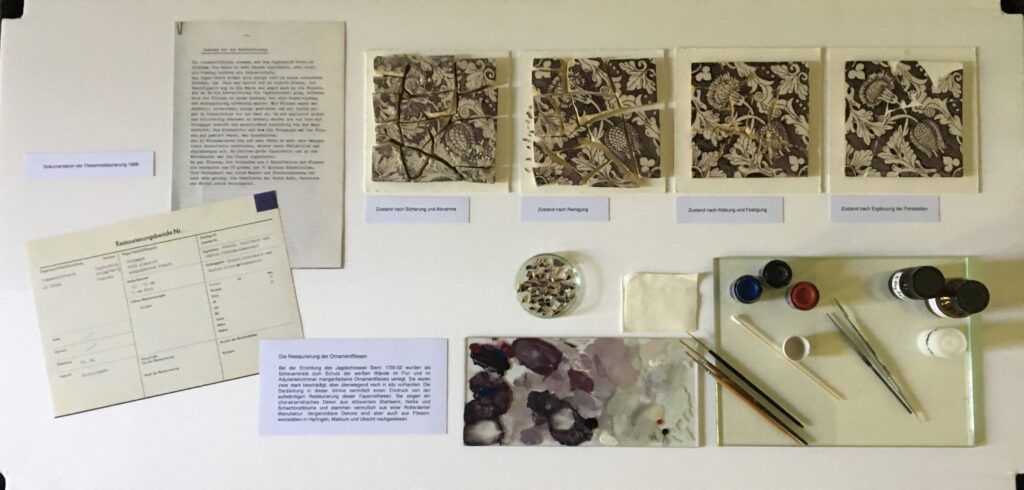
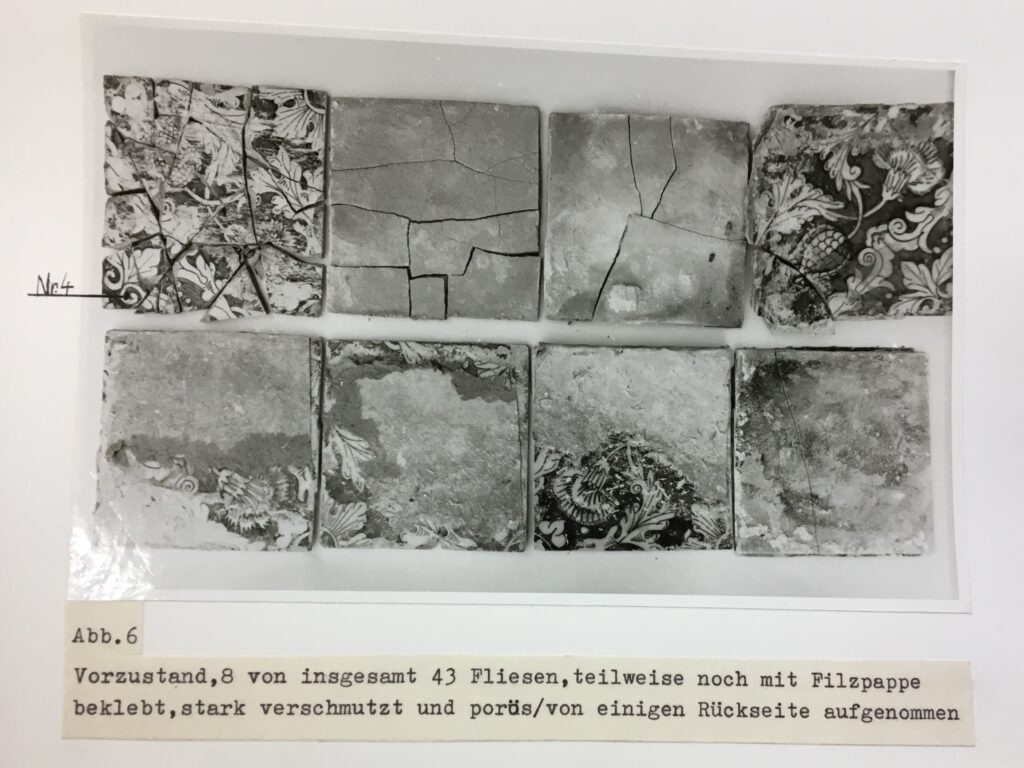
– Dr. Bernd Küster, Chairman of the Förderverein Jagdschloss Stern – Parforceheide e.V.

